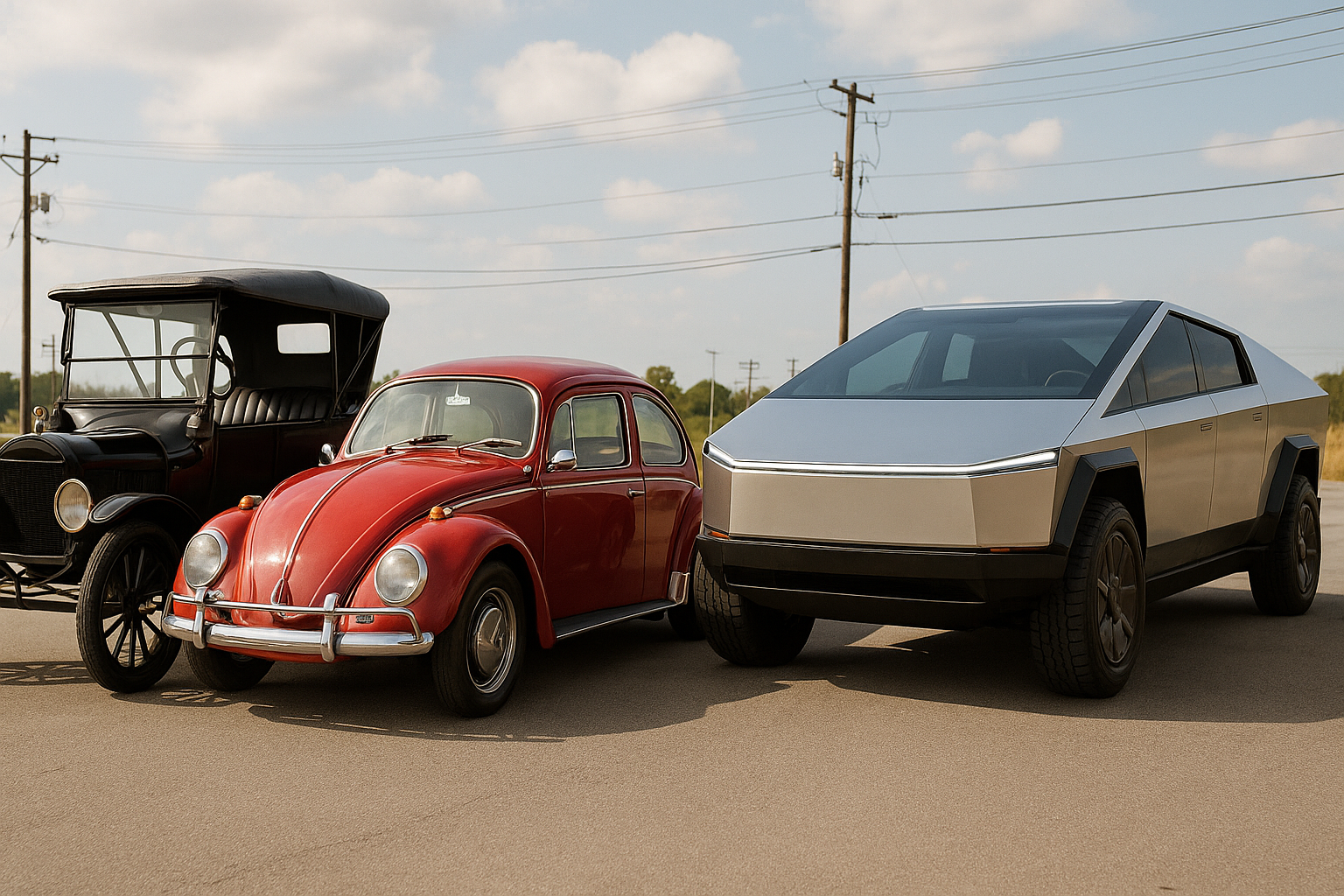Hook: Over more than a century of automotive history, certain vehicles have redefined what cars can be—from the first mass‑market Model T to the futuristic Cybertruck. Join us on a tour of ten milestones in iconic cars history that changed the automotive industry forever.
- How each car broke new ground in design, technology, or culture
- The lasting impact these models have had on the industry
- Why they remain revered icons today
1. Ford Model T (1908)
The “Tin Lizzie” was the first automobile built on a moving assembly line, driving down costs so an average family could afford a car. By 1927, over 15 million Model Ts had been sold, democratizing personal mobility and launching the age of mass‐market vehicles.
2. Volkswagen Beetle (1938)
Conceived as the “people’s car” in pre‑war Germany and perfected after WWII, the Beetle’s simple, reliable engineering and distinctive rounded shape kept it in production—almost unchanged—from 1945 until 2003. With over 21 million units built, it became the best‑selling car of its era.
3. Citroën DS (1955)
With futuristic fiberglass body panels, hydropneumatic self‑leveling suspension, and disc brakes, the DS stunned the world at its debut. It pioneered active suspension technology and set new standards for ride comfort and handling.
4. Mini Cooper (1959)
British Motor Corporation’s Mini solved the space crisis with a transverse‑engine, front‑wheel‑drive layout that maximized interior room. Its go‑kart handling inspired countless small cars that followed, and its cultural cachet endures in modern MINI Hatchbacks.
5. Ford Mustang (1964)
Launching the “pony car” segment, the Mustang combined sporty styling with affordable performance. It sold over one million cars in its first two years, proving there was huge demand for compact performance coupes and inspiring rivals like the Camaro and Challenger.
6. Toyota Corolla (1966)
Renowned for reliability and fuel economy, the Corolla set the bar for compact family sedans. By 2000 it had sold 20 million units, becoming the world’s best‑selling car nameplate and cementing Toyota’s reputation for quality.
7. Mazda MX‑5 Miata (1989)
Reviving the classic British roadster formula with Japanese reliability, the lightweight, rear‑wheel‑drive Miata returned two‑seat sports cars to popularity. Its balance and affordability influenced dozens of imitators and still delights drivers today.
8. Toyota Prius (1997)
The world’s first mass‑produced hybrid car married a gasoline engine with electric motors. The Prius’s runaway success—over 6 million sold globally—paved the way for electrified powertrains and made hybrid technology mainstream.
9. Tesla Model S (2012)
As the first electric car to combine long range, blistering acceleration, and luxury packaging, the Model S shattered preconceptions about EV performance. Its success prompted every major automaker to accelerate their own electric vehicle programs.
10. Tesla Cybertruck (2021)
With its angular stainless‑steel exoskeleton and all‑electric powertrain, the Cybertruck challenged traditional pickup design and signaled a bold new direction for utility vehicles. Its polarizing aesthetics and promised performance continue to influence EV pickup development.
FAQs
- Q1: Why was the Model T so important?
- A1: It introduced mass production to the auto industry, making car ownership accessible to millions and shaping manufacturing worldwide.
- Q2: How did the Citroën DS innovate ride comfort?
- A2: Its hydropneumatic suspension automatically adjusted ride height and damping, delivering an exceptionally smooth, controlled ride.
- Q3: What makes the Prius still relevant?
- A3: As a pioneer of hybrid technology, it demonstrated that electrified powertrains could be reliable, efficient, and mass‑market.
Conclusion & Next Steps
From the pioneering assembly line of the Model T to the futuristic steel shell of the Cybertruck, these ten vehicles exemplify transformative advances in cars that changed the automotive industry. Each model pushed boundaries—whether in production methods, design, performance, or sustainability—and their legacies continue to drive innovation today.
